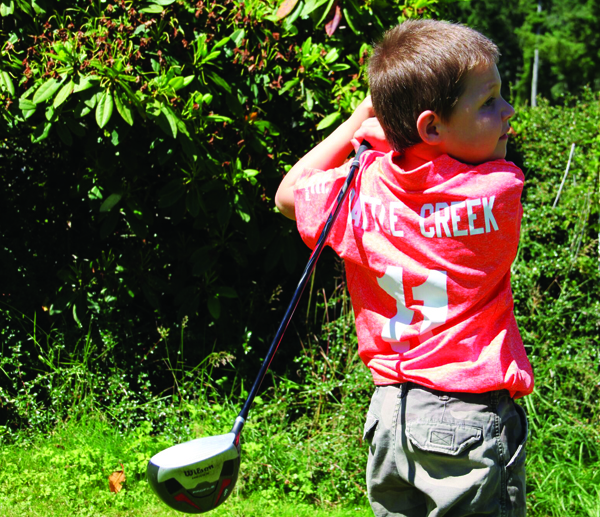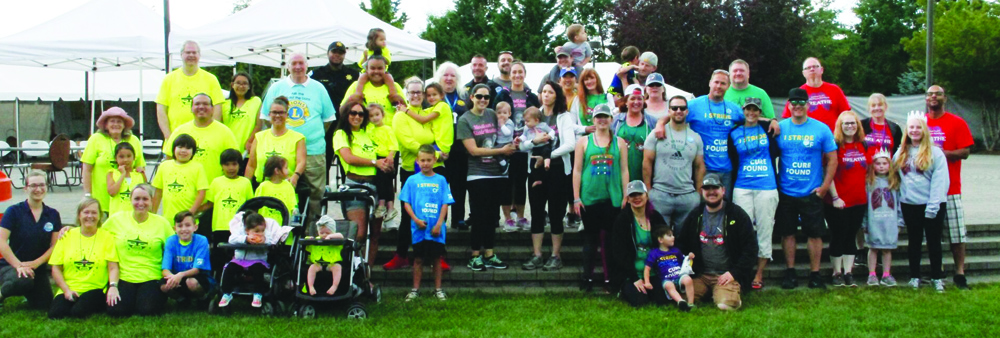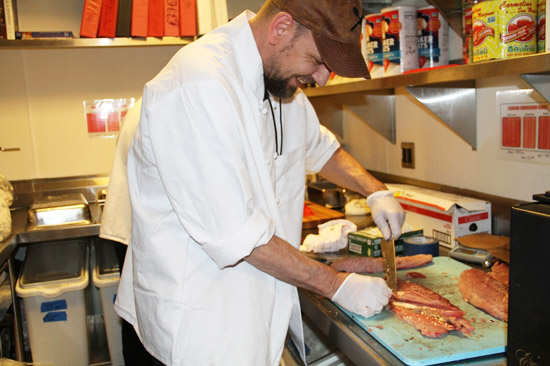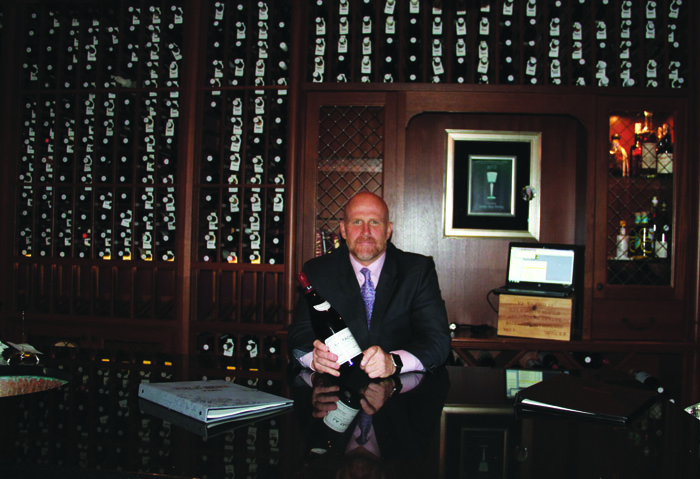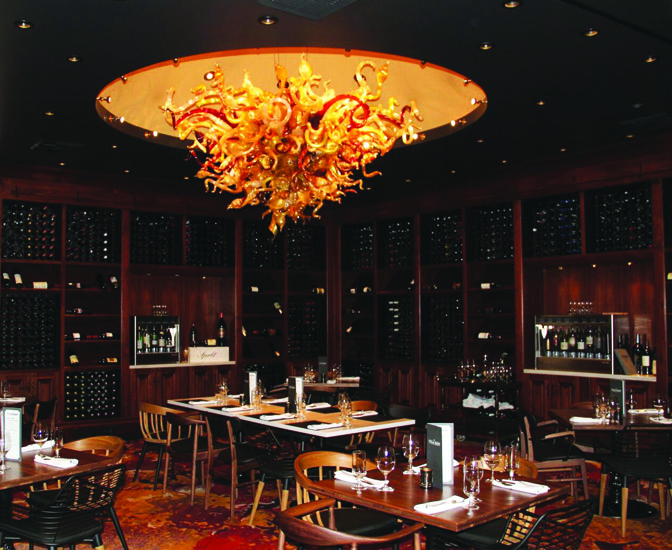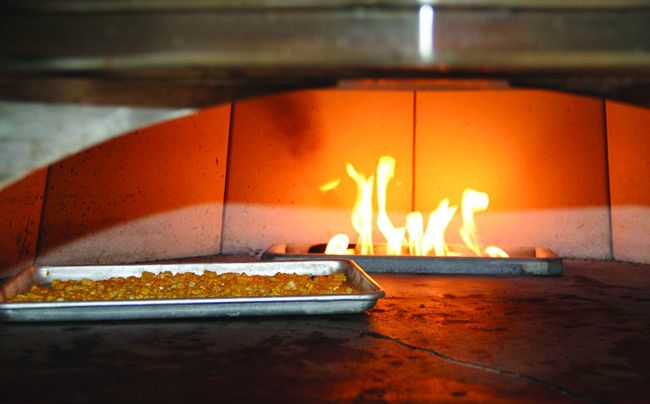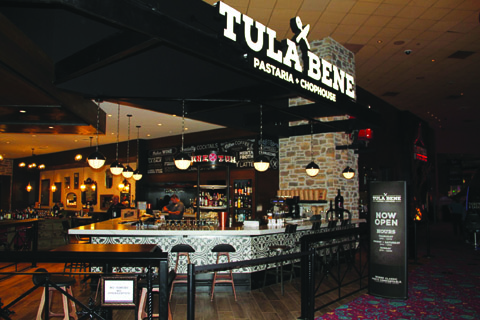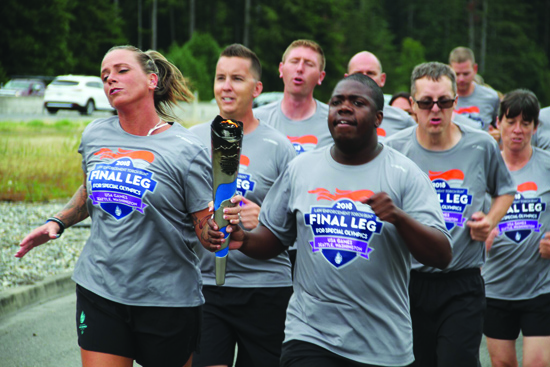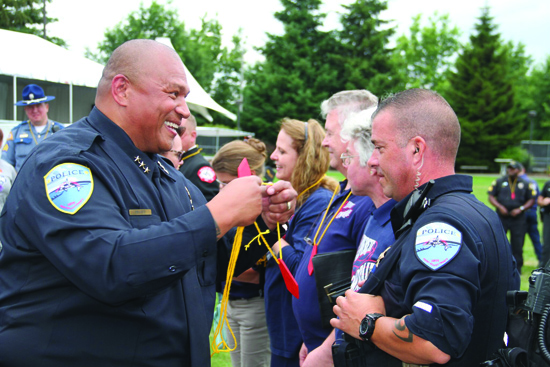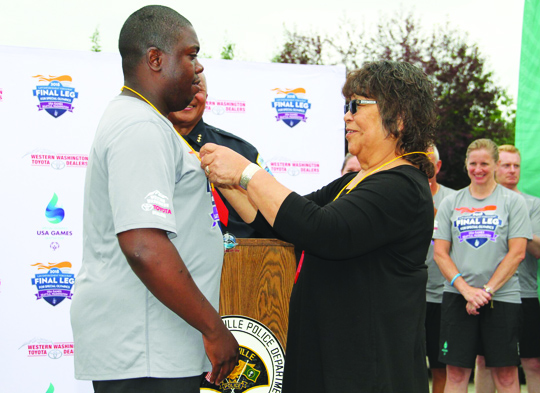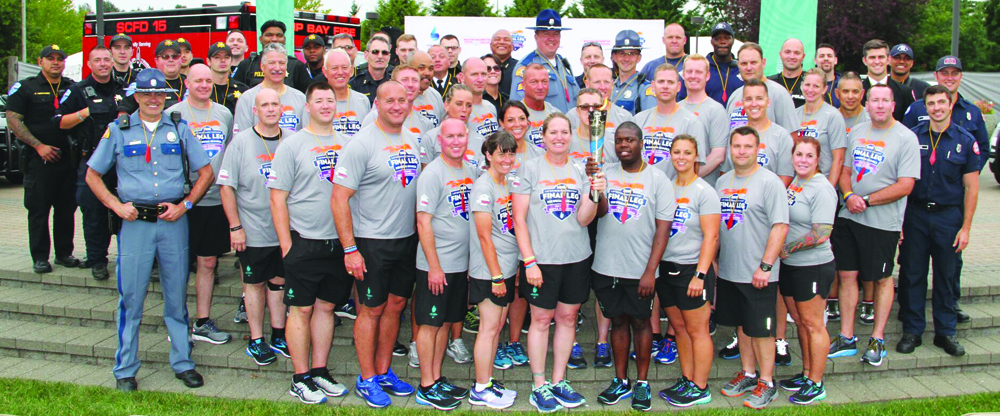Category: News
Hole in One: Battle Creek’s first PGA Jr. League team finishes season undefeated
By Kalvin Valdillez, Tulalip News
Young Tulalip tribal member, Brodie Kane, retrieved a few tees and his left-handed driver from his mini, red Ping golf bag and headed toward the driving range of the Battle Creek Golf Course. With extreme focus, he lined up his shot, adjusted his cap to block the sun from his eyes, and took a couple practice swings before driving the ball nearly one hundred yards. Brodie, who is eight, is part of Battle Creek’s first-ever PGA Jr. League golf team.
The team recently completed their first season undefeated, competing against six other teams within their league including teams from the Snohomish and Echo Falls golf courses. Brodie is one of six Tulalip tribal members on the team of twelve, along with his younger brother Braiden, Nolan and Emily Hegnes and also Hudson and Sammy Reyes.
“This is fun, I wish they had this when I was growing up,” expresses Hudson and Sammy’s grandfather, Ray Sheldon Jr. “I think we should try to find more ways to get young tribal members involved because this is an active game they can play for the rest of their lives, instead of sitting at home and watching TV or playing video games. I hope next year even more young tribal members will come out and play and get out and enjoy the sun.”
Ray attends all of his grandsons’ matches, following closely in a golf cart, offering both advice and support to them along the course.
“Hudson can drive the ball over two hundred yards and can hit a six-iron one hundred and sixty yards,” he proudly beams. “It’s a great program, I’m so happy I get to play a sport with them.”
The PGA Jr. League is offered at many golf courses nationwide to all children under the age of thirteen. The league was originally founded in 2011 and enlists professional PGA golfers as their coaches, teaching the youngsters about sportsmanship and how to conduct themselves while on the course. The Jr. League also hosts a number of competitions and camps throughout the summer, including the very popular Drive, Chip and Putt Competitions.
“It’s been so amazing; Brodie can’t wait to keep playing. He’s ecstatic that he got to golf three times this week,” says Brodie and Braiden’s mother, Dinesha Kane. “He’s grown so much since the beginning of the season; he’s more confident. I think more of our Native children should get involved because it helps our kids learn etiquette, patience and it gives them so much confidence and that transfers over to life.”
Battle Creek coaches, Alex Stacey and Bob Styles, reflected on a successful season, crediting a great turnout and a fun environment. The Battle Creek PGA Jr. golfers are now headed to the postseason championship rounds after finishing their season with a perfect record. Although the season has come to an end, Coach Alex encourages local kids to join-in on the fun during Battle Creek’s upcoming summer camp hosted August 7-9.
Brodie also encourages his fellow Tulalip youth to join him on the course next season, offering to play with any youngins interested in hitting the links.
“I learned a lot more moves about hitting and teeing up,” he exclaimed. “I like to use my putter because you line up the hole on the putter with the ball and it’s easier to hit it in. I think other kids should play because they might want to learn as well, because they might’ve seen people on TV playing golf. I think they should ask their moms and dads or uncles or grandmas if they can play because golf is really fun!”
For more information, including how to sign-up your little golfers for summer camp or next year’s team, please visit the Battle Creek Golf Course Pro Shop or call (360) 659-7931.
Making Great Strides toward a cure for cystic fibrosis
By Kalvin Valdillez
On the morning of July 7, over one-hundred and fifty community members laced up their best pair of walking shoes and gathered at the Tulalip Amphitheater for the annual Great Strides Cystic Fibrosis Foundation Walk. 2018 marks the organization’s thirtieth anniversary as well as the tenth anniversary since the first Great Strides Walk took place here in Tulalip. Great Strides Tulalip was organized by two local mothers of children living with cystic fibrosis (CF) who wanted to help find a cure for the life-threatening disease. Since then, the walk continues to raise awareness, helping the community get a better understanding of what CF actually is.
CF is a rare, complex genetic disease which causes an excessive buildup of thick mucus in the lungs as well as the pancreas and other organs throughout the body. People living with CF are prone to respiratory and pancreatic issues and also a number of infections due to bacteria buildup. According to the Cystic Fibrosis Foundation, more than thirty-thousand people are living with CF nationwide. Due to years of research and scientific advancement, the average lifetime for people living with CF has increased significantly to the age of forty. Circa the 1950’s the average child living with the disease rarely made it to elementary school.
“There are eightwalks we put on across Washington and Alaska,” states Washington CFF Development Director, Anna Lester. “We have about six-hundred and fifty thousand dollars raised and around twenty-five hundred to three-thousand walkers across the two states. It’s the CFF’s largest fundraising initiative, nationally there’s around five-hundred walks and forty-million dollars raised. This walk is the only walk north of Seattle in Washington.”
Kelsie Pablo co-founded Great Strides Tulalip to help find a cure for her son, Keldan, who was diagnosed with CF at birth.
“We start at the Tulalip Amphitheater and walk all the way around the Outlet Mall, around Boom City and cut through the Casino for about a three mile walk,” says Kelsie. “I started this walk with another mom ten years ago. And the reason why I started the walk is because my son has cystic fibrosis. The very first year we did the Seattle walk and that was a long commute for all of our families so we thought, why not start one in Tulalip?
“My son is a Tulalip tribal member and we have a huge group of supporters and we’ve just grown so much in these past ten years,” she continues. “We’re out here raising awareness for CF and all the money that we raise goes towards new medication, ultimately medication that will cure the underlying cause of CF.”
Over the course of its ten year run, the walk has inspired many families in the Snohomish County area to join on behalf of a loved one living with CF. A number of families’ and local organizations register as teams to participate in the walk. Each team wears different color t-shirts, displaying graphics that bring awareness to the disease, as well as the name of their teams such as Team Keldan and Team Alicia. This year there were twelve teams fundraising to help bring an end to the CF disease.
Several Tulalip Lions Club members attend the Great Strides Tulalip event every year, volunteering their time and assistance to ensure the walk’s a success. Many members also help spread the word leading up to the event, bringing out more and more walkers each year.
“I have been a member from the very beginning of the walk,” says Linda Tolbert, Tulalip Lions Club Community Services Chairwoman. “We’ve had Lions Club members from Arlington, Granite Falls, Lake Stevens, Seven Lakes, Marysville, Stanwood, Mill Creek and Tulalip participate. Our role is getting more people involved so they’re more aware of CF. Most patients have to take thirty to forty different drugs a day just to survive, we want to find a cure.”
Once all of the CF awareness walkers make their way back to the amphitheater, they’re treated to some midmorning entertainment as a live band plays rock n’ roll classics while participants get a chance to enjoy company and a snack, bringing the Great Strides Tulalip event to a close.
This year the goal for the teams of Great Strides Tulalip was a combined total of $34,004. Although the goal wasn’t met on the day the event took place, supporters can still make contributions to the team of their choice until December 31, by visiting the Tulalip 2018 page at www.fightcf.cff.org
TERO Vocational Training is Accepting Applications
National Night Out Tulalip, Aug 7
A Tradition of Storytelling
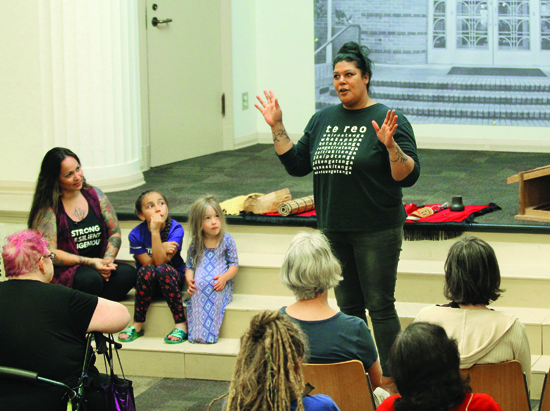
By Micheal Rios, Tulalip News
For Native Americans, the telling of stories passed down from generation to generation remains a crucial form of knowledge transfer. Oral storytelling traditions allow tribes to communicate their spiritual and historical understandings of themselves and the world they cultivated for their children and their children’s children. This all but guarantees that members of each individual tribal nation never forget their roots or lose sight of important teachings that continue a harmonious and cooperative existence with nature.
The tradition of storytelling lives on in Tulalip, where several prominent storytellers have been featured as part of a library-ran initiative to teach the general public about Native culture and to honor the Indigenous land on which they reside.
Culture bearers Michelle Myles, Natosha Gobin, and KT Jean Hots comprised a team of Tulalip storytellers who shared their craft at the Everett Public Library. The event was part of the city of Everett’s 125th anniversary celebration.
“The city of Everett, including the Everett Public Library, has been putting together a series of programs to celebrate the anniversary,” explained Mindy Van Wingen, Assistant Director Everett Library. “We wanted to include the Tulalip Tribes and honor the Native heritage of Everett and what came before the city was developed. The storytellers offered a great program. We are really happy with the attendance and the visitor engagement.”
The library’s auditorium was filled to capacity with eager listeners willing to explore local history from the Tulalip Tribes’ perspective, while learning about a vibrant culture and community.
“We were invited to share traditional stories from our area and ancestors,” said Natosha Gobin, Lushootseed Teacher. “We shared oral history and helped the listeners gain a better understanding of the life ways of Coast Salish people.
“Storytelling is significant because that is how all of the teachings were passed on, from the elders to children through oral teachings, and those teachings were passed on daily. We didn’t have a written language until the late 1960s, so storytelling is how everything that makes us who we are was passed on.”
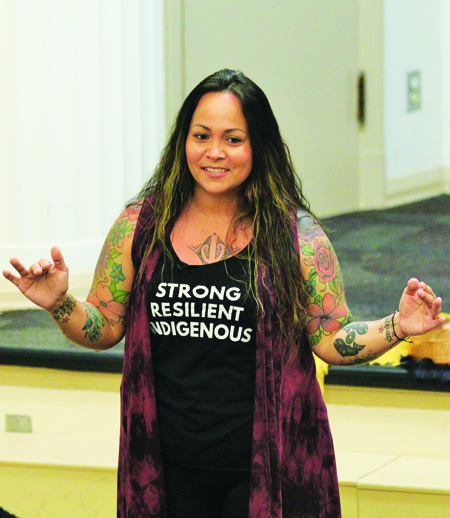
Natosha and Michelle took turns sharing traditional stories, such as The Seal Hunting Brothers, The Gossiping Clams, The Basket Lady, and A Story About Coyote. In each story were lessons learned about living in a good way, instructional survival skills, and even explanations for natural phenomena.
At one point, storyteller apprentice, nine-year-old tribal member KT took center stage and shared the story Her First Basket. After finishing her favorite story, KT received a loud applause from the audience.
“I think it’s important for kids to learn to tell stories. They can learn and go home and teach their parents and brothers and sisters,” shared KT after her storytelling session. “Kids can learn our culture and Lushootseed and help teach it. Family or friends can help you like the cedar tree helped the little girl in Her First Basket.”
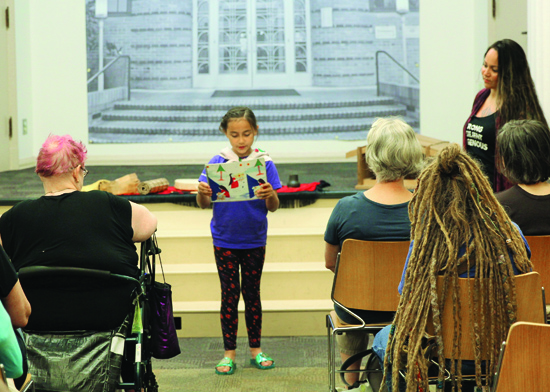
Native American storytelling has always been and continues to be equal parts real, metaphorical, spiritual, instructional and transformational. Most of all, however, the stories are entertaining and memorable to the audiences who hear them. This way the stories are remembered and passed down to the coming generations, who needs to understand who they are, where they come from, and why the world is the way it is.
“Storytelling means being the example, being the one that kids can look up to and ask questions to,” explained tribal member artist and storyteller Ty Juvinel. “Having a story to tell children, instead of yelling or chastising when they’ve done something wrong allows them to learn in a good way. From stories they learn the values of their people and how to present themselves.”
Ty has recently partnered with the Seattle Public Library system and will be sharing Coast Salish stories and tradition through the summer. Intended for kids ages 7-11, there is no registration required for families to bring their kids to a Ty story time.
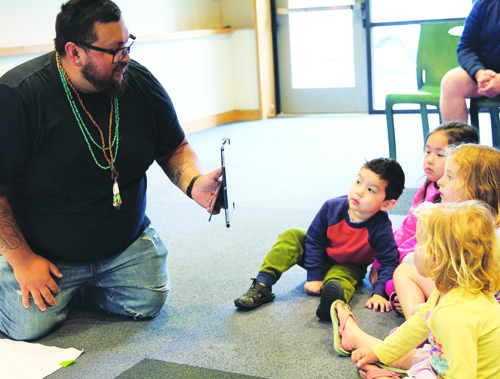
Using modern technology, Ty has fully illustrated and digitized several of his stories for use on an iPad. Of note, the University of Washington has purchased his digital stories to be used in their travelling exhibits and Burke Mobile for educating people on Coast Salish culture.
Seattle’s Broadview Branch was the latest to host the storytelling series. Children were treated to several original stories, including How Mouse Moved the Mountain, When Beaver Taught Man, and How Puppy Got His Ears.
“I loved it!” remarked Irene Haines, Librarian and enrolled member with Confederated Tribes of the Colville Reservation. “Ty did a wonderful job of being patient with the kids and speaking to them in their own language. There’s such a wealth of art and culture to be shared.”
Although the tradition of storytelling is less common today than it was many years ago, the rich oral tradition lives on through the current generation of culture bearers.
Tulalip Resort Casino’s new Italian steakhouse serves fresh, affordable dishes in fun, inviting atmosphere
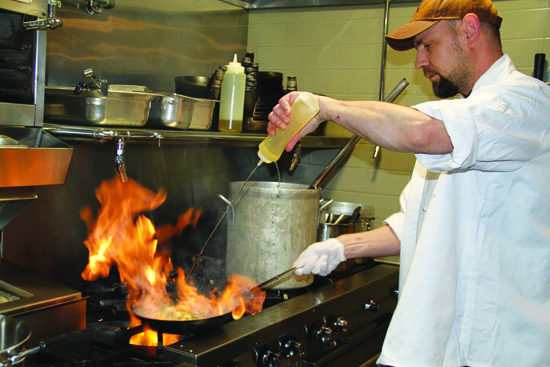 By Kalvin Valdillez, Tulalip News
By Kalvin Valdillez, Tulalip News
A few short years ago, the Tulalip Resort Casino (TRC) released a number of renovation plans to update the venues, restaurants, resort rooms and gift shops to a more modern design. Since then, Club Impulse has been replaced by the Draft Sports Bar and Grill, a consolidation of two gift shops led to the opening of Journey’s East, and the relocation of the poker room provided the space for the popular pizza joint, Blazing Paddles. The resort rooms have received makeovers featuring beautiful Tulalip artwork in each room, and a new lounge welcomes resort guests as they arrive from a long day of travel. TRC’s latest endeavor, however, might be its biggest change yet, transforming their highly-popular and extravagant fine-dining restaurant, Tulalip Bay, into an urban eatery that welcomes gamblers, nightlifers, wine connoisseurs and families alike, named Tula Bene Pastaria + Chophouse.
“It’s a livelier space,” expressed Tula Bene Chef and GM, Jeremy Taisey. “Formally it was fine-dining, very intimate and quiet. We tried to create a more fun atmosphere where you can come in, sit down with friends, have some wine, have some great food and relax and enjoy company. And we strive to make the food a part of that conversation. It’s a lot more open but it still has a certain intimacy at the same time. And the way we approach the food in the kitchen is to bring it back to the basics, get rid of all the fancy stuff and keep it clean and simple. The atmosphere is casual and fun, the food is presented nice, we have a lot of great wines and the pricing is affordable for our guests. We want to give the guests fine dining without them realizing it’s fine dining.”
With delicious dishes including a variety of steaks, chops, burgers and pastas, the restaurant’s new menu is sure to have something for everyone in your party. A number of meals and drinks are made tableside, adding to the fun experience.
“Tulalip Bay had a fine-dining theme and even though I want the food to be just as good, I want Tula Bene to be more of a fun restaurant, something that’s more approachable and that people will leave saying, we had a good time,” expresses Tulalip Resort Casino Executive Chef, Perry Mascitti.
The Tula Bene menu was created by a team that included Chef Perry, Chef Jeremy, TRC Sommelier Tommy Thompson and TRC Food and Beverage Director Lisa Severn. Once an idea for a dish was agreed upon, Chef Jeremy took to the kitchen to create the recipe from scratch, using only fresh ingredients and local meat for the dishes.
“It’s focused on Italian cuisine, everything is made fresh to order,” Chef Jeremy expresses. “Some of our signature items would be our lobster ravioli, which is very unique in that there’s a lot of lobster that actually goes into it. We bring in seventy live lobsters a week for the restaurant. We have a real commitment to freshness. Our steaks are all hand-cut here in the kitchen, we have custom dry-aged steak, we have wagyu steaks. Our beet salad is fantastic, it has a great balance of roasted beets and all these different flavors and has a really nice presentation. For our salmon carpaccio we cure our salmon in-house. We bring in all of our fish whole, nothing is pre-fileted, we break everything down here. Again, it’s just that commitment to quality and freshness.
“We used to be fine-dining and at the heart all of these guys are fine-dine cooks and chefs, so to go causal was a bit of a challenge,” he continues. “Our mantra is, we don’t do easy, we make easy happen through hard work and learning. When a guest comes into the restaurant and orders, it may appear simple or something easy to cook, but really these guys do about four to five hours of prep every day before we open. For an example, all of our peas are fava beans. We bring them in whole and shell them by hand, it takes hours and hours of work. It’s easy to buy a bag of frozen peas, but we’re very committed to quality and freshness and letting the flavors shine through.”
Sommelier, Tommy Thompson spoke of the many wines offered at Tula Bene. With two wine cellars, the restaurant certainly has wide variety of red and whites for their guests.
“We’re wine-centric,” says Tommy. “We have a pretty cool selection of wine for people looking for an experience. We have the Italian wines, thirteen of those, and thirteen international wines as well. We have keg wines with Italian and Washington fruit. You’re not paying for the fluff, the bottle, the cork, the wrap, but you’re getting high-end fruit. There’s a stigma about wine, that it’s pinky out and high-end only, and we’re here to challenge that and say just relax and enjoy a damn good glass of juice with Washington fruit for around eight-dollars a glass.”
Tula Bene features a full bar located near the gaming floor, separating the machines and the restaurant. The famous Chihuly glass chandelier that hung at the heart of Tulalip Bay is still in place, highlighting the stylish new floor plan. Tommy also paired a few of his favorite wines with a couple new Tula Bene menu items to suggest to the guests upon their first visit to the restaurant.
“Chef Jeremy and his team put together an excellent menu and did a fantastic job,” he states. “One of the most simple foods is the French fry and they took it and put out the best parmesan fries, it’s ridiculous, they’re addicting. My favorite wine to go with that would be a killer prosecco. Fries and bubbles are perfect together. I’m also currently geeking out on a wine called Domain Mercouri. It’s a white wine from Greece and it’s grown in volcanic soils, so it gets ripe but retains really good acidity, that goes great with the pancetta wrapped halibut.”
Since Tula Bene’s recent opening on June 14, the restaurant has received several great reviews. Chef Jeremy, Chef Perry and Tommy all expressed the joy they feel when seeing a family have a great time while at the restaurant.
“The main course I want to serve here is fun and a fun experience, the sharing experience,” says Chef Perry. “To see our guests come in for great food and leave with great memories, I think that’s what’s most important. It’s always nice when people say, we had great food in your restaurant, but it’s always that much better when we get a guest who leaves saying they had a great experience.”
For further details and to view the Tula Bene Pastaria + Chophouse menu, please visit www.TulalipResortCasino.com
Special Olympians carry Flame of Hope through Tulalip
By Kalvin Valdillez, Tulalip News
The Flame of Hope was once again proudly carried through Quil Ceda Village on the evening of June 28, for the ‘Final Leg’of the Law Enforcement Torch Run for the 2018 Special Olympics USA Games. The flame is carried by law officials and Special Olympic athletes through local communities nationally to raise awareness and funds for the Special Olympics every summer.
At the end of May, the Tulalip Police Department participated in the Torch Run. Two local officers carried the Flame of Hope for over twelve miles through the Stanwood, Marysville and Tulalip communities in anticipation of the 2018 Special Olympics State Spring Games at Pacific Lutheran University.
The Final Leg is the last torch run of the year and takes place prior to the Special Olympics USA Games. Washington State hosted the main event this year at the UW Husky Stadium, making Tulalip one of the last stops. The group of nearly thirty law enforcement officials and Special Olympians who carried the Flame of Hope throughout Quil Ceda Village, also ran through many other communities in Washington, some as far away as Spokane.
The runners began their one-mile journey at the Bank of America and were cheered on by local commuters all the way to the Tulalip Amphitheater, where an intimate ceremony occurred comprised of Washington State Patrol officers, the Marysville Police Department, Tulalip Bay Fire Department and Tulalip Police Department. Interim Chief Pruitt was on MC duty for the ceremony, welcoming the group of runners once they arrived at the amphitheater.
“The Special Olympics was founded in 1968 and it strives to create a better world by fostering the acceptance and inclusion of all people,”the Chief explained after a remarkable performance of the National Anthem by the Everett Chorale. “It reflects how the power of sports instills confidence, improves health and inspires the sense of competition. The Special Olympics transforms lives through the joy of sports every day, everywhere. It is the world’s largest sports organization for people with intellectual disabilities, with more than 4.9 million athletes in over one hundred and seventy-two countries. The Law Enforcement Torch Run is the largest grassroots fundraising and awareness campaign for the Special Olympics across the globe. More than 97,000 law enforcement personnel participate in volunteering and fundraising internationally. This year Team Washington has two hundred and fifty athletes that were selected to compete in the 2018 Special Olympics USA Games.”
Many Special Olympians were among the group, including Ernie Roundtree who found a passion for running in marathons through the Special Olympics. Ernie, who is from Pennsylvania competed in a number of events in the Special Olympics for over eighteen years.
“Today I would like to talk about how the Special Olympics impacted my life,”said Ernie to the crowd of supporters. “Special Olympics changed my life and impacted me to do more. Because of the Special Olympics, I’ve completed seven full marathons, two in Disneyworld and one Marine Corps marathon. Special Olympics has taught me not to give up, to stay strong and if you put one foot in front of the other, soon you’ll be crossing the finish line.”
Tulalip Chairwoman, Marie Zackuse, was also in attendance. She admired all of the athlete’s spirits, noting the games hold a special place in her heart, as she has a nephew who loved to participate in the Special Olympics.
“It’s my honor to welcome the delegation that came running in,”said Marie. “I’m so very proud of each and every one of you. We are very appreciative and want to honor all those community members and athletes. We are truly honored to host this stop and we wish that each and every athlete not only wins but has fun. My hands go up to the law enforcement here, the ones that came in on the run and all those who brought this together.”
The event concluded with an inspiring moment. Keeping true to Tulalip traditions, the Tulalip Police Department gifted the Special Olympians with necklaces featuring a small cedar paddle pendant, carved by Tulalip artist Tony Hatch.
The 2018 Special Olympics USA Games are happening July 1-6 at the UW Husky Stadium and features over 4,000 athletes. For more information, please visit www.SpecialOlympics.org
More usually, a quick history is currently going to BE1,000 5,000 words.
Writing an essay might be a challenging task for anybody and it’s not created any easier as soon as the teacher makes an assignment subsequently wants one to actually think of the right matter. Obviously every pupil believes they will have composed professional documents but really they’ve perhaps not because you will find a couple of requirements and should you r composition isn’t able enough to fulfill those standards then there’s no way you’ve composed professional documents. Continue reading “More usually, a quick history is currently going to BE1,000 5,000 words.”
New documentary explores Indigenous families’ long history of forced separation
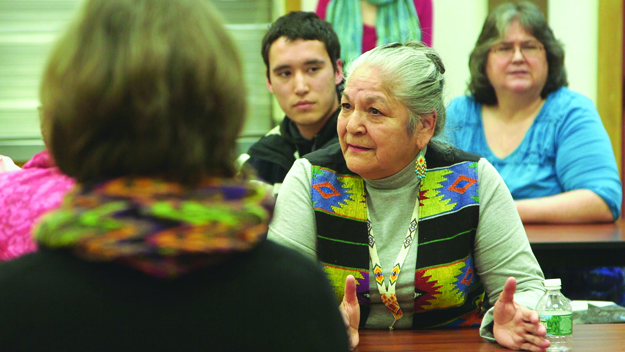
By Micheal Rios, Tulalip News; Photos courtesy of Upstander Project & SIFF
There has been a nationwide controversy over the United States government’s immigration policy in recent weeks. The sweeping wave of shock and disgust directed at the Trump Administration resulted from national news outlets detailing immigrant children being separated from their parents after being caught entering the U.S. illegally from Mexico.
For Native America, visual confirmation of the federal government forcibly removing innocent children from their parents, while arguing it’s for the good of the child, is nothing new. ‘Kill the Indian, save the man’ was a long-lasting theme by which Native children were separated from their communities and put into boarding schools or even unwillingly placed with white families.
For much of the last century, the United States government maintained a genocidal policy that forcibly removed Native American children from their homes and placed them into white communities. As recently as the 1970’s, one in four Native children nationwide were living in non-Native foster care, adoptive homes, or boarding schools.* Many of them faced traumatic physical and emotional abuse by white adults in effort to erase their cultural identity and history.
It’s hard to know just how many children experienced this separation phenomenon of the 19th and 20th centuries because there was no system in place to account for them and many disappeared.
Stolen children, racism, devastated families, and a cultural genocide resulting from government sanctioned atrocities committed against Native peoples are topics thoroughly explored and weaved together in the intense, feature-length documentary Dawnland.
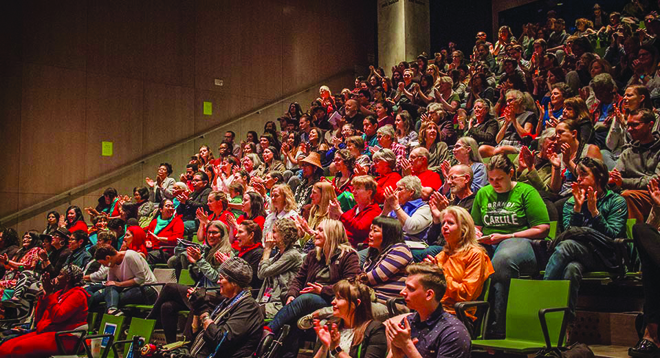
“Today, Native American children are far more likely than other children to grow up away from their families and tribes,” stated Dawnland Co-Director Adam Mazo. “Many of us are familiar with popular culture’s portrayal of the westward expansion, Indian wars, and boarding schools. We are often taught to think that these occurred in a distant time, disconnected from people who are alive here now.”
Dawnland sheds light on the decades of forced assimilation and misguided child welfare policy that devastated generations of Indigenous people. Revealing the untold narrative of Native child removal in the United States, the film goes behind-the-scenes as a state-sanctioned Truth and Reconciliation Commission goes to the Wabanaki tribal community of Maine with the sole purpose of recording the actual history of this policy and to witness sacred moments of truth telling and healing.
The film follows both Native and non-Native commissioners as they travel across the state speaking to tribes of the Wabanaki people. These recorded meetings, the first state government sanctioned of their kind, produce intimate and harrowing moments of truth and reconciliation. But they soon discover these atrocities are more than just history, as current state policy continues to shatter Wabanaki families and threaten the tribe’s very existence. What begins as a learning process evolves into a modern fight for a people’s inalienable human rights.*
As part of this year’s Seattle International Film Festival (SIFF), a special public screening of Dawnland was held at the Seattle Central Library. Sponsored by Tulalip Tribes Charitable Fund, the screening was a hit as the library’s auditorium was filled to max capacity to watch the extraordinary documentary.
“The film will air on Independent Lens nationally on PBS in the 2018-2019 season and we’re super excited,” said filmmaker Adam Mazo in a Crosscut interview. “As far as we know this will be the first time that Wabanaki people are featured on a nationally televised program.”
*Source: Dawnland and SIFF press materials

